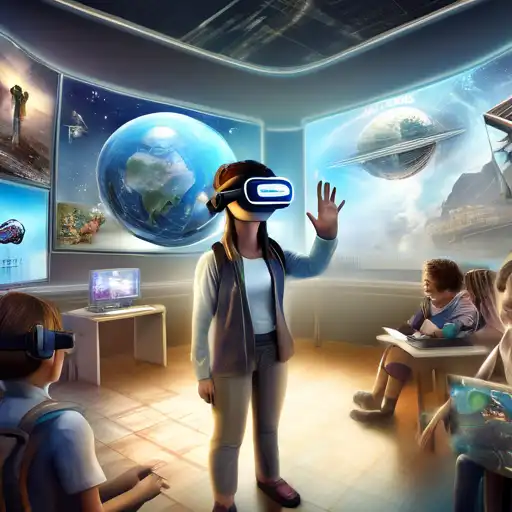Introduction to Virtual Reality in Education
Virtual Reality (VR) is rapidly transforming the educational landscape, offering immersive learning experiences that were once beyond imagination. This technology enables students to explore ancient civilizations, dissect complex biological structures, and even conduct chemical experiments in a safe, virtual environment. The potential of VR in education is limitless, paving the way for a new era of interactive and engaging learning.
The Benefits of VR in Learning
VR technology offers numerous advantages in educational settings. Firstly, it enhances engagement by providing students with hands-on experiences that are both fun and educational. Secondly, it caters to various learning styles, making education more inclusive. Visual learners, for instance, can benefit from 3D models and simulations, while kinesthetic learners can interact with virtual objects. Lastly, VR can simulate real-world scenarios, preparing students for future careers in fields like medicine, engineering, and more.
Implementing VR in Classrooms
Integrating VR into classrooms requires careful planning and consideration. Schools need to invest in the necessary hardware, such as VR headsets and compatible devices. Additionally, educators must be trained to effectively incorporate VR into their lesson plans. Despite these challenges, the long-term benefits of VR in education, such as improved retention rates and student engagement, make it a worthwhile investment.
Challenges and Considerations
While VR holds great promise for education, there are hurdles to overcome. The cost of VR equipment can be prohibitive for some institutions, and there's a need for more educational content tailored to VR platforms. Moreover, prolonged use of VR headsets may cause discomfort for some users, highlighting the importance of moderation and proper usage guidelines.
The Future of VR in Education
The future of VR in education is bright, with advancements in technology making it more accessible and affordable. As VR content becomes more diverse and tailored to educational needs, its adoption in schools and universities is expected to rise. This will not only revolutionize how subjects are taught but also how students perceive and interact with the world around them.
For more insights into innovative learning technologies, explore our EdTech Trends section. VR is just the beginning of a transformative journey in education, offering endless possibilities for learners and educators alike.
